The effects and impacts of climate change have been growing for decades, and a 2023 survey done by Leger showed that 67% of Canadians polled were worried about change in climate with 54% of Albertans having that same concern.
Our climate is rapidly changing
Climate change is a global crisis that the international and local community have crucial roles in addressing through changes in individual, political and industry action. CPAWS is a nationwide charity that works towards increased protected lands and waters, a a proven tool to act against the twin crises of climate change and biodiversity loss. There are many ways to describe climate change and what it is or what it means. Shifts in temperature and weather patterns caused by greenhouse gases trapped inside earth’s atmosphere increase the global temperature. The accelerated rate at which we are experiencing climate change, and therefore harder for all species and communities to adapt, is largely due to anthropogenic (human) activity.
Understanding the Alberta Climate Context
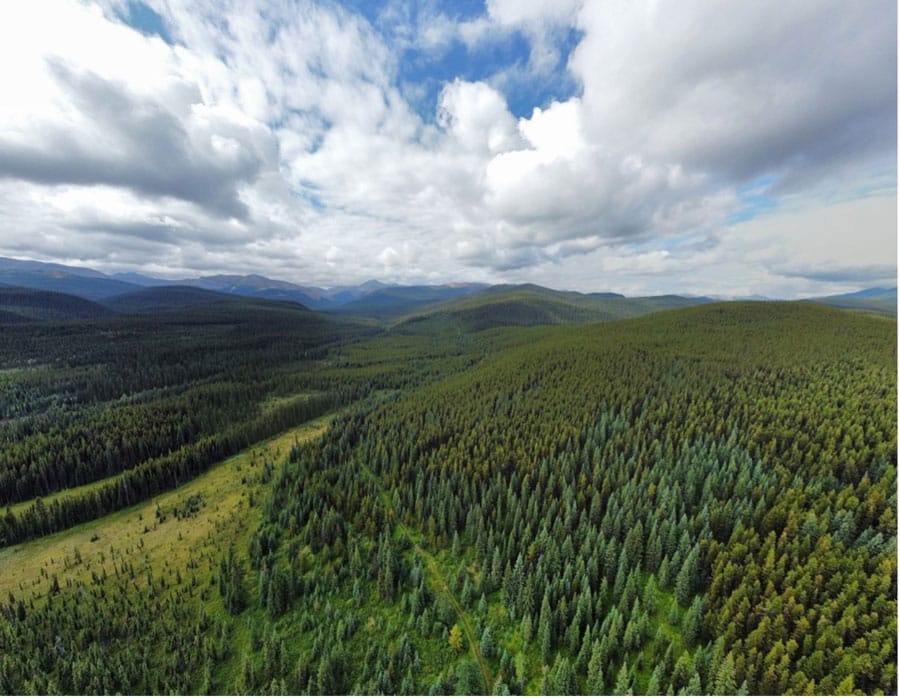
Climate change is causing devasting effects on the planet. In recent years, those effects are being felt more commonly and frequently by people in Alberta. Severe storms, wildfire and floods have left their mark across communities in Alberta. Remote and Indigenous communities are particularly at a heighted risk of climate and weather events from their close relationship and dependence on the land, their physical distance from resources and limited infrastructure to respond to events.
Below are specific examples of changing conditions in Alberta.
Climate Change in Alberta
Climate change is causing devastating effects on our planet, some of which we have already begun to experience here in Alberta.
Melting Glaciers
Glaciers are made up of fallen snow that over centuries have become packed down into giant blocks of ice. Our alpine glaciers provide thousands of people with clean drinking water and rivers and streams to play in through seasonal cycles of freezing and melting. However, when glaciers start to melt faster than snow falls which is our current reality, there is a risk of water shortages to ecosystems and communities.Learn more about glaciers.
Heavy Precipitation & Floods
Warmer temperatures mean that there is increased energy content in the atmosphere. A helpful analogy is to think of a pot of water going from simmer to boil. Increased temperatures lead to an increase in atmospheric moisture content which forms ideal conditions for extreme weather like storms and heavy precipitation which can result in flash floods. While one may think heavy precipitation would help address drought conditions, it simply falls or melts too quickly to be properly observed by the landscape. These extreme rain events have also recently caused the failure of mine tailings and wastewater ponds resulting in contaminated wastewater to be released into freshwater ecosystems [LINK to press release!]
Warming Oceans & Inland Waters
Warming temperatures change habitats for many species and can displace cold water-loving creatures. In Alberta’s cold creeks and rivers, there are concerns for the survival of struggling native trout populations. Trout love cold, oxygen-rich waterways, and their habitat is predicted to warm up. This is especially concerning as CO2 dissolves better in warmer waters and decreased the water PH meaning, the water for our native risks becoming more acidic over time.
Read about the exotic species found off the coast of Canada.
Insect Outbreaks
Increased temperatures, particularly in winter, can increase the severity of insect outbreaks. As an example, the mountain pine beetle is a parasitic insect that kills its host trees and leaves large stands of rust-colored deadwood behind as seen in Jasper National Park. While these insects are native to our boreal forest, Alberta’s cold winters killed them off in previous years. Winters are now warmer and shorter leaving the population to grow, reaching “outbreak” levels. What is left behind acts as tinder for disastrous wildfires.Learn more about mountain pine beetles and cold temperatures in Alberta.
Permafrost Melt
Permafrost refers to the ground or “substrate” made up of soil or rock that remains frozen from year to year. When permafrost thaws from rising temperatures, the ground can become unstable creating problems for infrastructure, water drainage patterns can be altered, and large stores of carbon can be released into the atmosphere.Read about what melting permafrost means for us Canadians.
Drought
Excess heat in the atmosphere can cause the moisture in soil to evaporate. With less water in the soil, the process of transpiration in plants is slowed, plants grow slower, or they can also die. This impacts local farmers which in turn can drive up the cost of crops and food for communities.Check out current drought conditions
Wildfire
People in Alberta have lived through increasingly severe wildfire seasons and their devastating impacts. Examples include Slave Lake (2011), Fort McMurray (2016), High Level (2019) and the record-breaking wildfire season of 2023. Dryer conditions from increased temperatures set the scene for wildfire that spread faster and burn hotter. Provinces and Territories are already noting that the wildfire season in starting earlier and lasting much longer. Fire models predict that the average area burned in the Western boreal forest in Canada and Alaska will double by 2050 and increase by 3.5-5.5 times by the end of the centuryFire models predict that the average area burned in the Western boreal forest in Canada and Alaska will double by 2050 and increase by 3.5-5.5 times by the end of the century
Learn More
The Biodiversity Loss Crisis: Wildlife and Species At Risk
The other ‘twin’ of the twin crises is the biodiversity loss crisis which refers to species loss, their habitat and the overall decline of all livings. In Alberta, caribou, bison and native trout face varying threats to their population health and to rapidly fragmented habitat. By conserving and improving connectivity of their habitat, we can ensure the survival of our beloved species in Alberta.
Harnessing the power of nature solutions
Nature-based solutions to climate change seek to increase the resiliency of the natural ecosystems we rely on by strengthening the relationships between species and their habitats. Often, this is achieved through the conservation and restoration of landscapes.
Nature-based approaches are often called “no-regret” options, meaning that the measures are useful even if the effects of climate change do not materialize as predicted. For example, helping to stem the loss of biodiversity across the globe. Nature-based approaches are often more cost-effective in the long-term than other solutions and can produce important socio-economic benefits for the environment, communities, and local economies. Nature-based solutions already exist, we just need to scale them up!
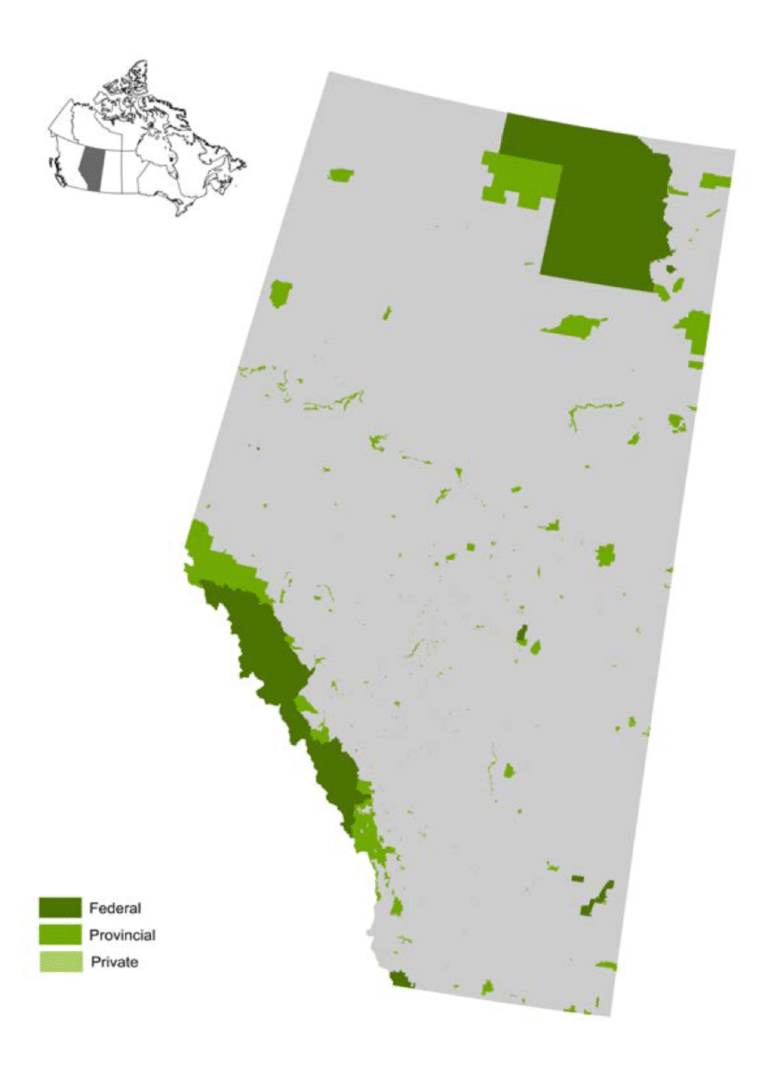
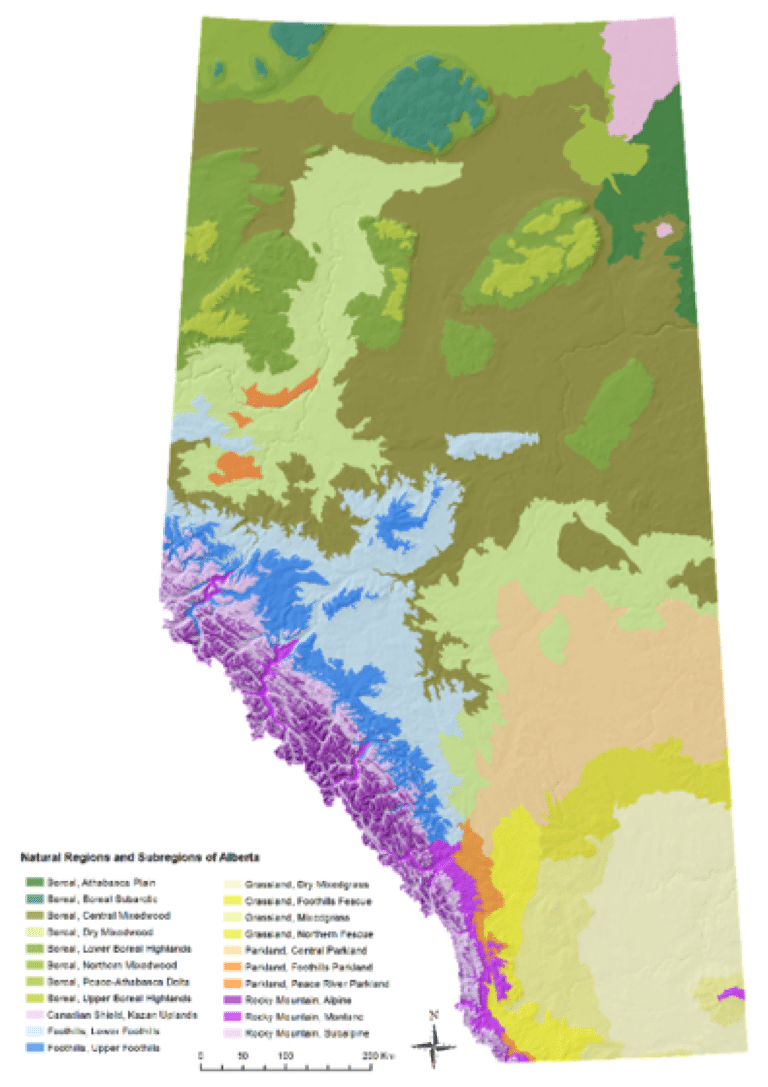
Parks & Protected Areas in Alberta
Theses maps are the most up to date Parks and Protected areas in Alberta, which only cover about 15% of the province and are small and disconnected. When we compare them to our current natural subregions we can see that they are also not representative of all the diversity in our province.
Read the CPAWS Conservation Blueprint, a guide to protected areas planning.
Mitigate & Adapt to Climate Change
Benefits in Protecting Intact Ecosystems
Protecting intact ecosystems is one of the best nature-based approaches to mitigate and adapt to climate change and has many benefits for ecosystems, wildlife and communities. Below are examples of these benefits. You’ll notice that many of these are from helping nature flourish!
Reduce Habitat Loss
Nature-based climate solutions can reduce stressors to wildlife such as habitat loss by reducing or completely preventing human impacts.Undisturbed Carbon Sinks
Forests, soils and wetlands can act as carbon sinks. Peatlands, a type of wetland, store massive carbon stores that if disturbed would be released in the atmosphere.Increase Vegetation Resiliency
They increase resiliency of flora and fauna in the face of climate change by providing safeguarded spaces where other disturbances to their survival are limited, limiting plant or animals to one stressor rather than many.Bolster Species Adaptability
Intact and connected protected area networks increases the ability for species to move and adapt to changing habitats.Refugia
Many species are displaced from climate change or human disturbance. Nature-based climate solutions can provide refugia (buffer zones) for wildlife species.Climate modeling
Securing Protective Measures
As the climate gets hotter and drier, the soil will no longer be able to support the same kind of plant life and those plants will not be able to support the same kind of animal life. Climate modelling for Alberta shows a northward shift of most of the province’s ecoregions over the next 100 years. In this time period, Alberta will loose large swaths of its boreal forest; meanwhile, grasslands and parklands will take over the province. Alberta’s lands will also become more homogenous over this time, meaning we will loose a lot of our current biodiversity.
The three maps below are a predictive model from R. Schneider (2013), which compares current natural subregions in Alberta to the predicted natural subregions in Alberta in 2050 and 2080, based on current climate and emissions scenarios.

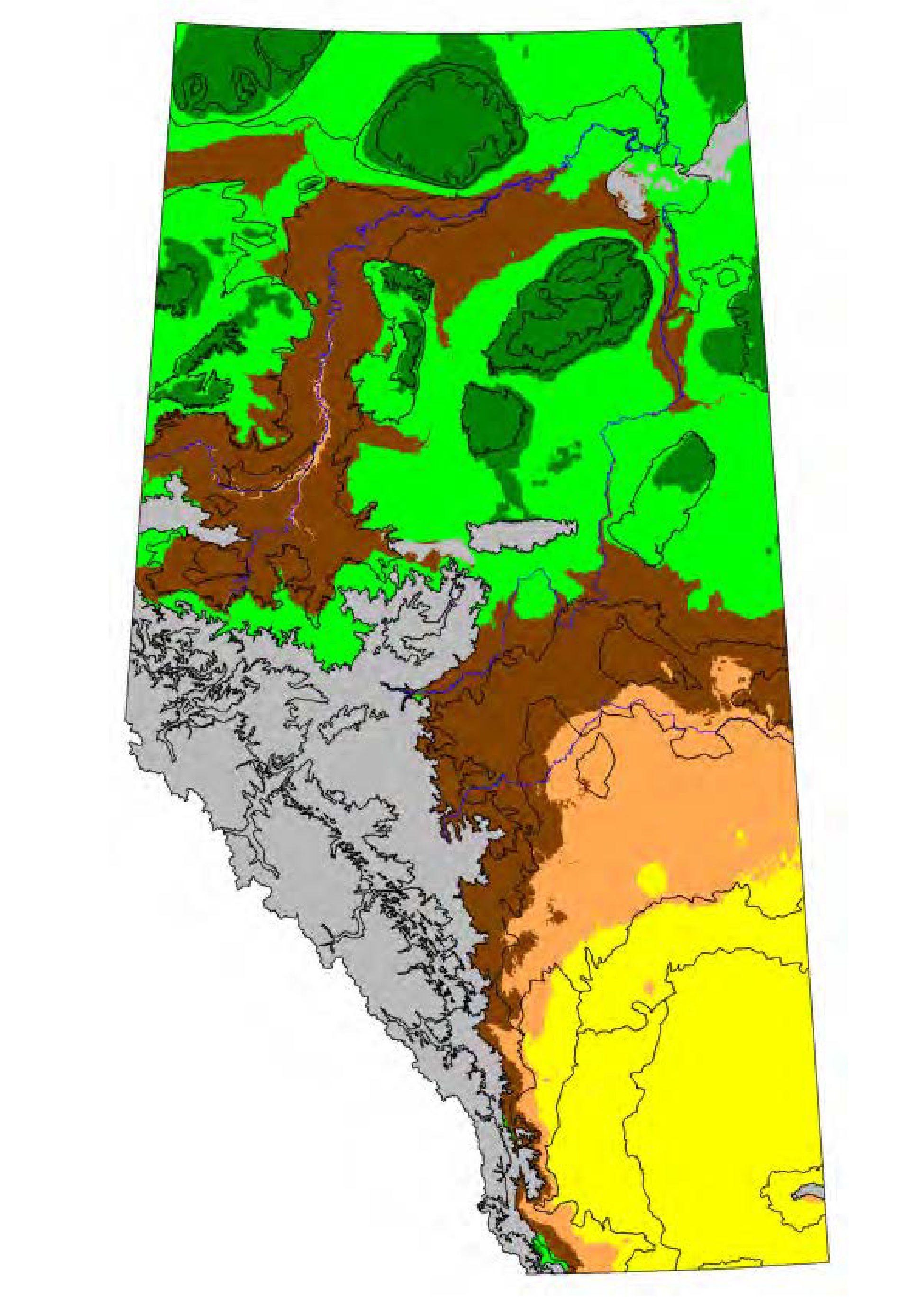
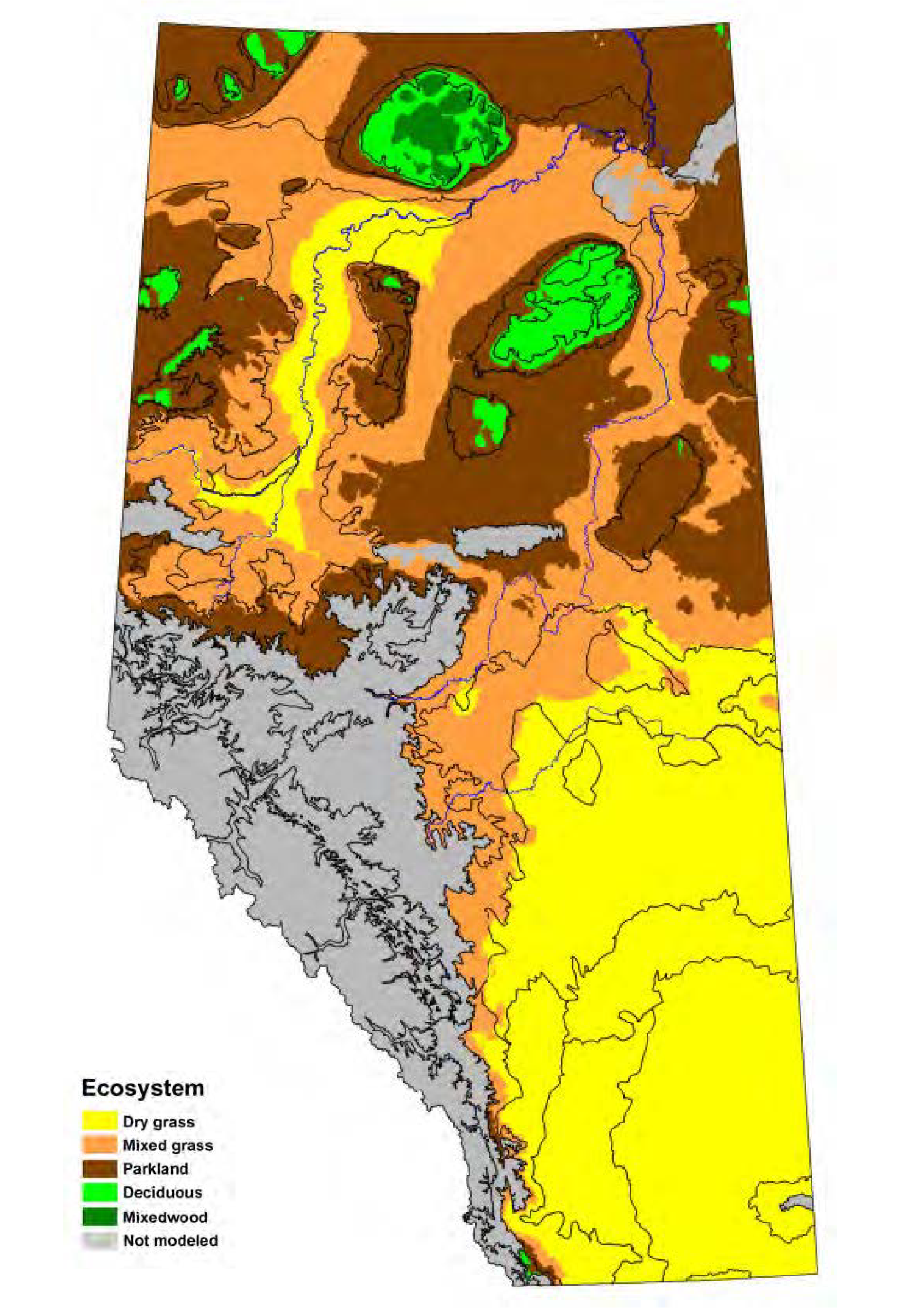
Learn more
Parks & Protected Areas in Alberta
Parks and Protected areas in Alberta only cover about 15% of the province and are small and disconnected. When comparing them to current natural subregions, it is clear that the spread of parks and protected areas is not representative of the province’s biodiversity. Parks and protected areas can be an essential tool in leveraging the nature-based climate solutions in Alberta.
Make a donation
Move conservation forward in Alberta.
Lasting protection for nature and wildlife in Alberta doesn’t happen overnight (although we wish it did)! Your donation fuels our fight for nature. Donate to support CPAWS Northern Alberta’s conservation efforts.
